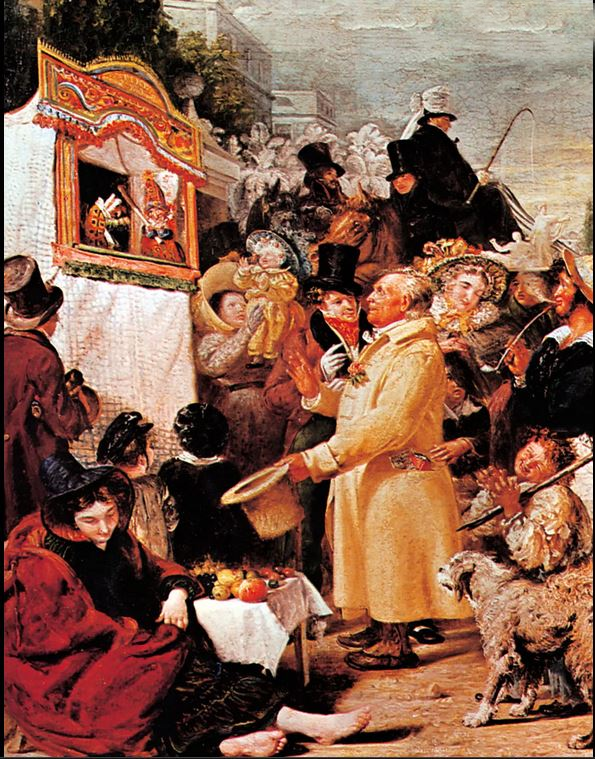A History of Punch & Judy
his-story
In 1660, King Charles II was restored to the English Monarchy. The King, in an early command performance, delighted in the string puppet’s antics. Pulcinella interrupted popular marionette shows by making inappropriate noises, reciting satirical jokes, and performing pratfalls and dancing. It’s what string puppets were made for!
The English took this Italian immigrant to their hearts but in so doing, they proved incapable of pronouncing his name correctly, so it was soon shortened to Punch. Lacking in the social graces but still, by virtue of the patronage he enjoyed, politically correct, his popularity grew. Bookings in all the best spa towns of: Harrogate, Bath and Royal Tunbridge Wells were de-rigeuer.
Mr. Punch ‘acquired’ an English wife called Joan, actually this was Judy in a similar guise. Both Joan and Judy shared the same looks and temperament, but one was a string, and the other a hand, puppet. For 150 years, ‘there was no show without Punch’.
But times change and marionette shows, which were inherently expensive to operate, ceased to be economically viable. What to do? Mr. Punch’s popularity never waned and yet, it looked like his number was up.


In 1780, another strolling Italian puppeteer, Giovanni Piccini, created a play using stock character hand-puppets. Soldiers, monks, Italian jesters, courtiers, dogs, devils and the landed gentry; all were transformed into officers of the law, doctors, dog owners and the notorious public executioner: Jack Ketch. Freed from their strings Judy and Punch’s assailants did the most obvious of things, they picked up a slap stick. The modern knock-about show, we know and love today, was borne. If the show didn’t resonate, (was ‘modern’ in this new context) then the puppeteer and his family, would starve.
It worked and now Giovanni’s apprentice’s show, painted by Benjamin Robert Hayden in 1828 (adjacent picture) titled: ‘Punch or May Day’, is on view, in the Tate Gallery, London.
The Victorians took the new steam trains, and Punch and Judy, to the beaches of Swanage, Weymouth, Brighton and Ramsgate. The theatres, adopting the popular seaside awnings became the red-and-white-striped theatre clients hire today. Clown ‘Joey’ Grimaldi and Peter Pan’s crocodile, all resulted from Punch’s willingness to ‘play to the crowd’.
Pictures ‘freeze’ the action, which gives the impression that Punch and Judy hasn’t changed at all but Punch and Judy is not a static show. Not only does it move between fetes, fairs, and parties, adapting to each venue and its audience; where-ever it ‘lands’ and in so doing, it changes with the times. Relevance and sensitivity are its by-words, otherwise audiences ‘vote’ with their feet.
Parents enjoyed a show not seen today. Today’s ‘kiddies’ enjoy the live entertainment whilst sitting with their parents. Uniquely a good show will entertain with gifts of fun, mayhem, and laughter. That is why, in a 2006 poll, Mr. Punch was voted a national icon.